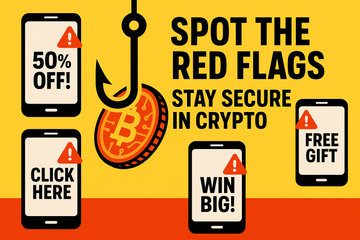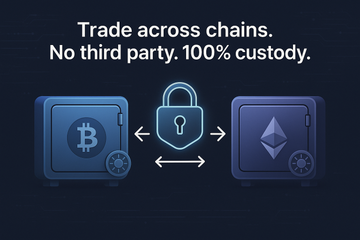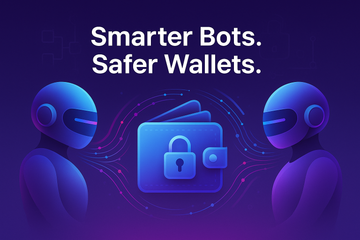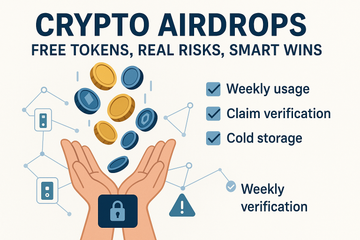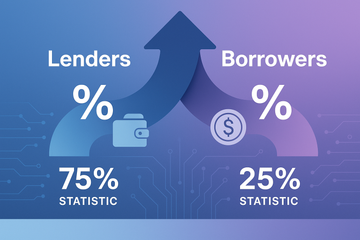It starts with a deal that feels too sweet to pass up. A hardware wallet for half price. An exchange fee that looks tiny. A mining contract that promises steady daily returns. You click, you commit, and then, the ground moves. The cheap item disappears, or it suddenly “requires” an upgrade. The service you wanted is out of stock, but a pricier one is ready right now. That whiplash is the heart of a bait-and-switch scam. It thrives on urgency, pressure, and your fear of missing out.
Let me explain the simple idea first. A bait-and-switch scam lures you in with a low-cost product or service, then pushes you toward a more expensive or riskier alternative. It’s not new. It just learned new tricks in crypto. And yes, it still relies on fast talk and fine print.
So, what’s the bait in crypto?
In crypto, the bait is usually a low number or a flashy promise. Cheap hardware wallets. Near zero trading fees. Discounted “lifetime” tax software. The initial hook looks safe. It feels small. You’re not being asked to send your life savings, not yet. But the switch comes fast.
You know what? The switch often hides in the details. You commit time. You click a few buttons. You create an account. You move funds. That’s when the upsell hits. The more steps you take, the harder it gets to walk away.
Where the switch bites hardest
Hardware wallets with a catch
Here’s a classic. A site, or a marketplace listing, sells a Ledger or Trezor wallet for way below market price. You pay, and the seller adds a twist. They say you need a paid “activation” or a “security setup” to make it safe. Or they include a seed card with words already printed and claim it saves time. That is not security. That is a trap. No real Ledger or Trezor will ever ask you to pay to activate the device, and they will never ship a wallet with a pre-made seed.
Sometimes the switch is subtler. The discounted wallet is suddenly out of stock. The seller nudges you to a different model with inflated shipping, an extended “support” plan you do not need, or a pricey bundle. It still looks like a deal, but the total cost balloons.
Exchange fees that grow teeth
Another pattern shows up on exchanges or swap apps. The ad says near zero fees. You start the trade, then a withdrawal fee appears, or a spread that is not obvious at first. Some platforms hide the cost until you are ready to send. A $0.00 trading fee can sit next to a hot withdrawal fee, and by the time you notice, you have already moved your assets in.
Cloud mining and the phantom upgrade
Mining contracts love a good hook. A small, cheap plan promises daily payouts. Then, once you pay, you are told the hash rate is not enough. You are pushed to “upgrade” for real results. If you push back, the payments slow or stop, and customer support nudges you again. This is the switch wearing a uniform.
Support scams that start friendly
Fake support reps reach you on Telegram, Discord, or X. They offer help for stuck funds or blocked accounts. The bait is empathy. The switch is a paid “priority fix,” a request for remote access, or a smart contract you must sign. If the fix requires your seed or your signature on a strange contract, it is not a fix. It is a funnel.
Why smart people still get caught
It is not about intelligence. It is about timing. Bait relies on scarcity, “only three left,” and on a strong anchor, a visible low price. Once you act, you feel committed. Walking away feels like losing the time you already spent. That nudge is the sunk cost effect. Scammers know you will want to complete the process, so they crank up the pressure when you are most invested.
There is a mild contradiction here. We tell people to move fast in crypto. Markets are quick. But that speed can be an entry point for pressure tactics. The fix is not slowness. The fix is a checklist you can run fast, even when the clock is loud.
Quick tells that a switch is coming
- Sudden substitutions: “That discount model is gone, but this premium one is available now.”
- Hidden fees at the finish line: You see them only when you try to withdraw or ship.
- Pushy upgrades: “It will not work unless you buy the bundle or plan.”
- Pre-generated seed phrases: Any wallet that arrives with a seed already printed is compromised.
- Remote access requests: No legitimate support needs screen sharing for your private keys.
- Weird urgency: Timers that reset, or reps who will not let you pause.
How to buy a hardware wallet without drama
Keep it simple. Buy from Ledger.com or Trezor.io, or from their listed authorized resellers. Price check against the official store. If a deal looks far lower than the rest, it is usually bait. If you use Amazon or another marketplace, confirm the seller is the official brand store. Look for untouched packaging and tamper-evident seals. When you first set up the wallet, confirm the firmware through the official app, Ledger Live or Trezor Suite, and generate the seed offline on the device.
One more thing. Never pay for “activation” or “setup” services. If someone tries to sell that, walk away. If they insist, report it. A real wallet does not need a paid unlock. Your seed words are created by you, on the device, with nobody watching.
Scripts that help you say no
Pressure tactics thrive on awkward silence. A ready phrase can break it. Keep these handy:
- For hardware upsells: “I came for the base model at the listed price. If that is not available, I am leaving this order.”
- For surprise fees: “Show me the total cost before I move funds. If it is not clear, I will cancel.”
- For support scams: “I will contact the official support channel myself. I will not share my seed or sign unknown contracts.”
Short, calm, done. The point is not to argue. The point is to exit.
If you already got caught
It happens. Do not stew, act. If you bought a questionable wallet, move your funds to a new seed on a fresh device. Do a clean setup, on a known good machine, using the official app. Never reuse a seed that might be exposed. Contact Ledger or Trezor support directly through their sites. They see these cases often and can help you harden your setup.
If you were pushed into an overpriced plan or fake service, gather screenshots, invoices, and chats. Ask for a refund in writing. If you paid by card, dispute the charge. If you paid in crypto, move fast to limit further contact and revoke approvals. Check your wallet permissions on Etherscan or a trusted tool, and revoke any unknown token allowances.
Seasonal traps and trend storms
Scammers love busy seasons. Big sales weeks, bull runs, airdrop hype. During holidays, you will see wallet deals that glitter. During market runs, the fee bait ramps up. When gas spikes, watch out for “priority mint” upgrades that promise faster confirmation for a premium. If someone uses fear of missing out to steer you, pause. A good product will still be good after you breathe.
A tiny checklist you can run fast
- Compare the price with the official store. Large gaps mean trouble.
- Check the domain and SSL. Typos and lookalikes are common.
- Ask yourself if you can complete the purchase without add-ons.
- Refuse remote access and seed requests. No exceptions.
- On setup, generate the seed yourself on the device.
- Verify firmware in Ledger Live or Trezor Suite.
- Keep notes and screenshots. They become proof if you need them.
A quick word on psychology
Anchoring makes the first price feel like the true price. Scarcity makes the countdown feel real, even when it is not. Commitment nudges you to finish a process you started. Knowing the names helps. When you see them in the wild, you can label them and step aside. It is not about being suspicious of everything. It is about being steady when the pitch gets slippery.
Small truths that help you stay safe
Here is a small contradiction I will own. Discounts are not always scams. Ledger and Trezor run real promotions. Exchanges can lower fees for new users. Deals happen. What sets a legit deal apart is clarity. The offer is consistent across their site. The price is visible from start to finish. Nothing is hidden behind the last click.
Honestly, the best guardrail is boring. Buy from the source, read the prompts, and slow down when a rep tries to hurry you. If you feel your shoulders tense or your breathing pick up, that is a sign. Take a beat. That moment is where you get your money back, not from a refund months later.
Closing thoughts
Bait-and-switch scams do not look scary at first. They look friendly. They look helpful. They speak fast, then sell faster. In crypto, where speed and novelty rule, that style can blend in. So you build your own rhythm. Simple checks. Clear lines. A habit of stepping back for a second.
Buy your hardware wallets from the official stores. Verify before you trust. Refuse surprise upgrades. Keep your seed private, always. These are small moves, but they keep you steady when the pitch gets noisy. And if a deal screams today only, ask yourself a quiet question. Will it still be worth it after I sleep on it? If the answer is no, you just saved yourself more than money.





